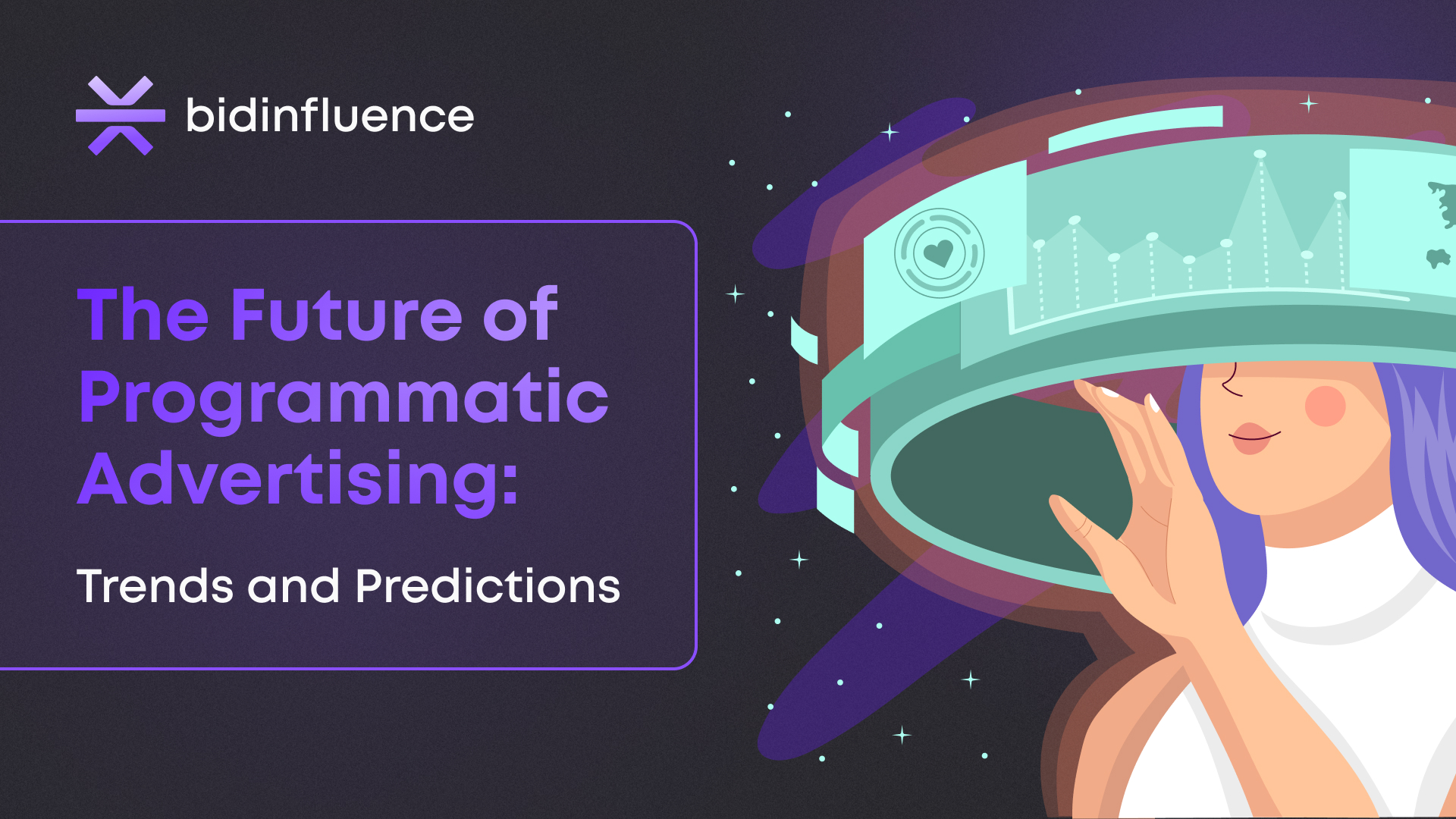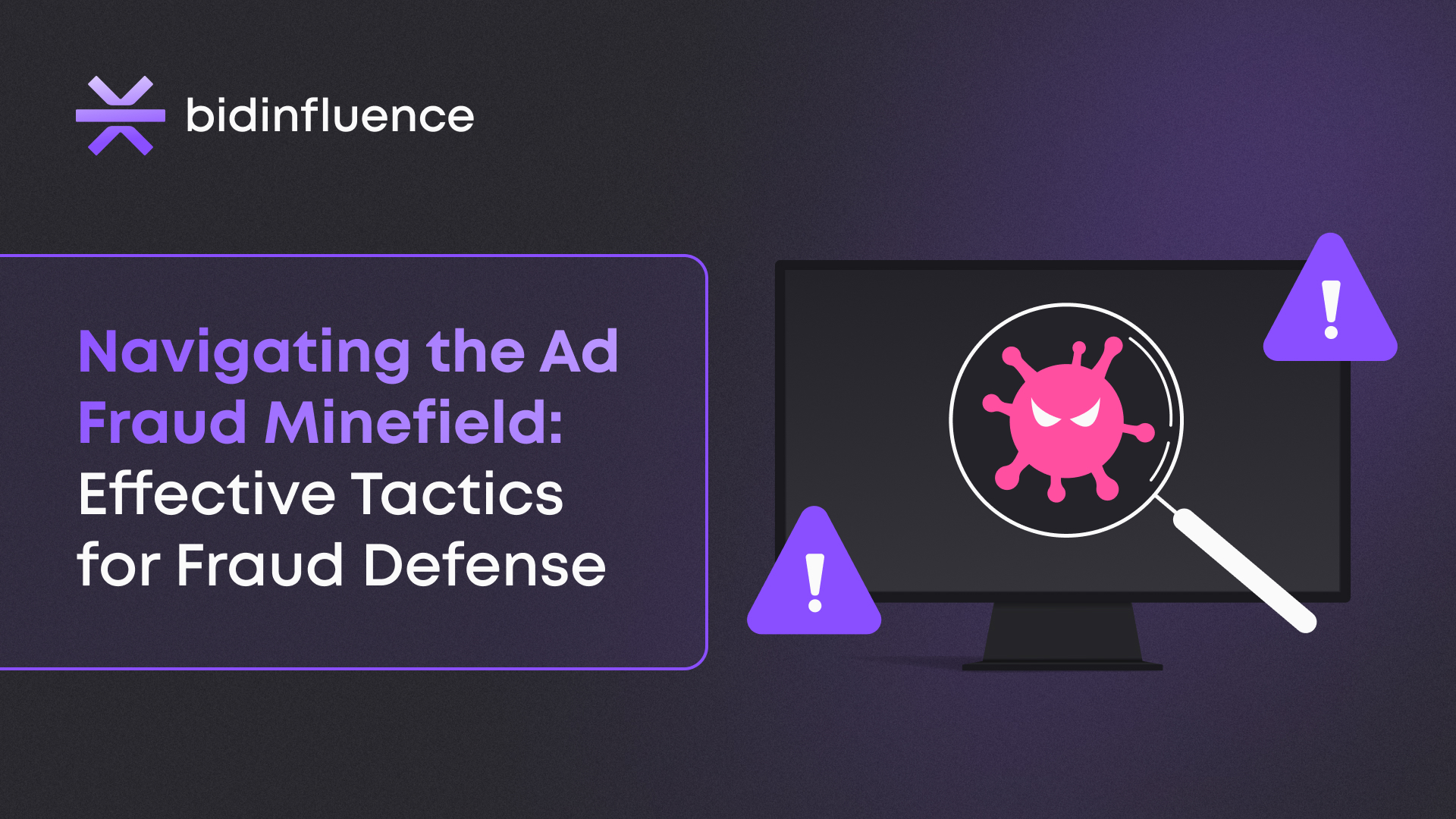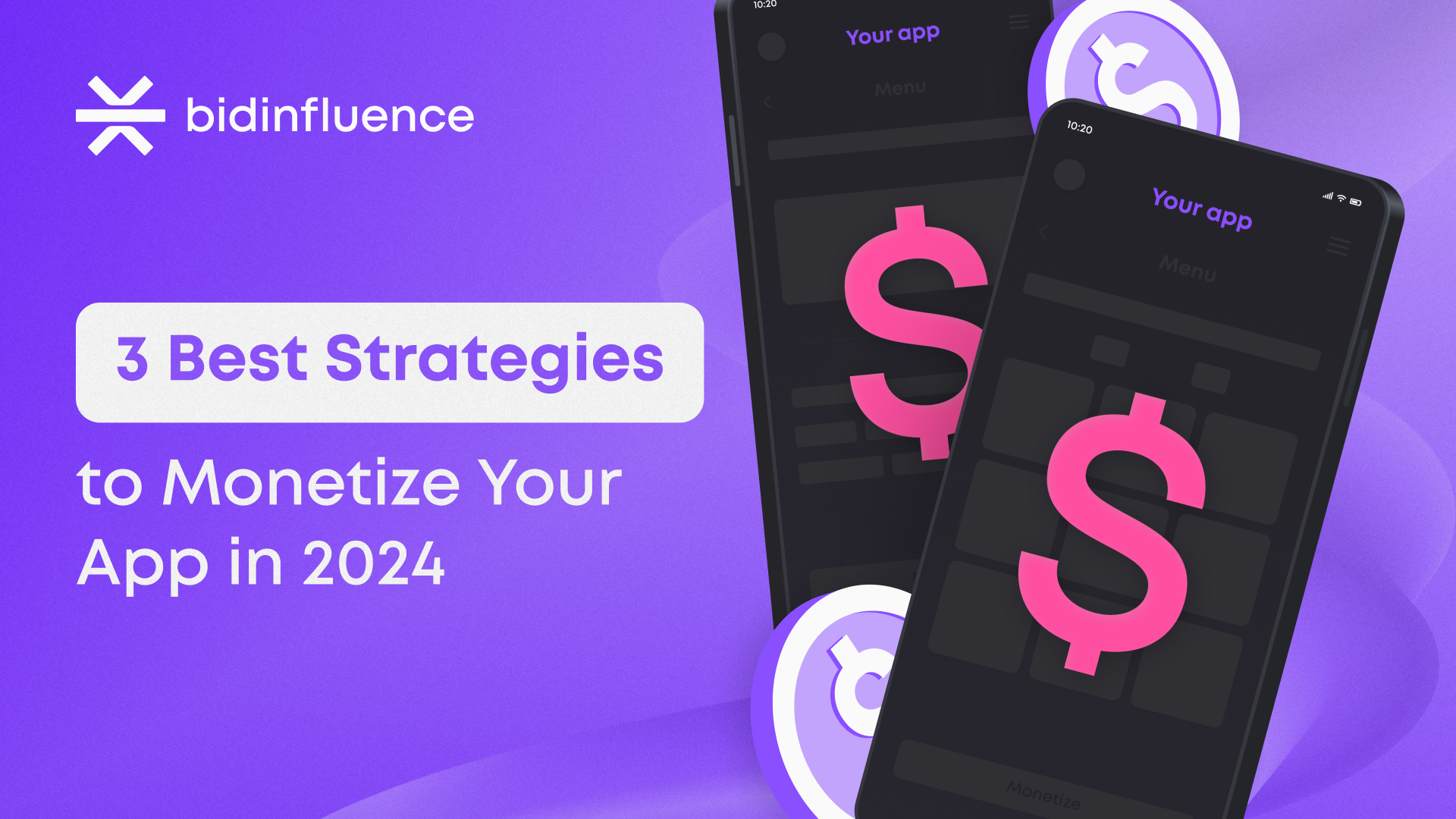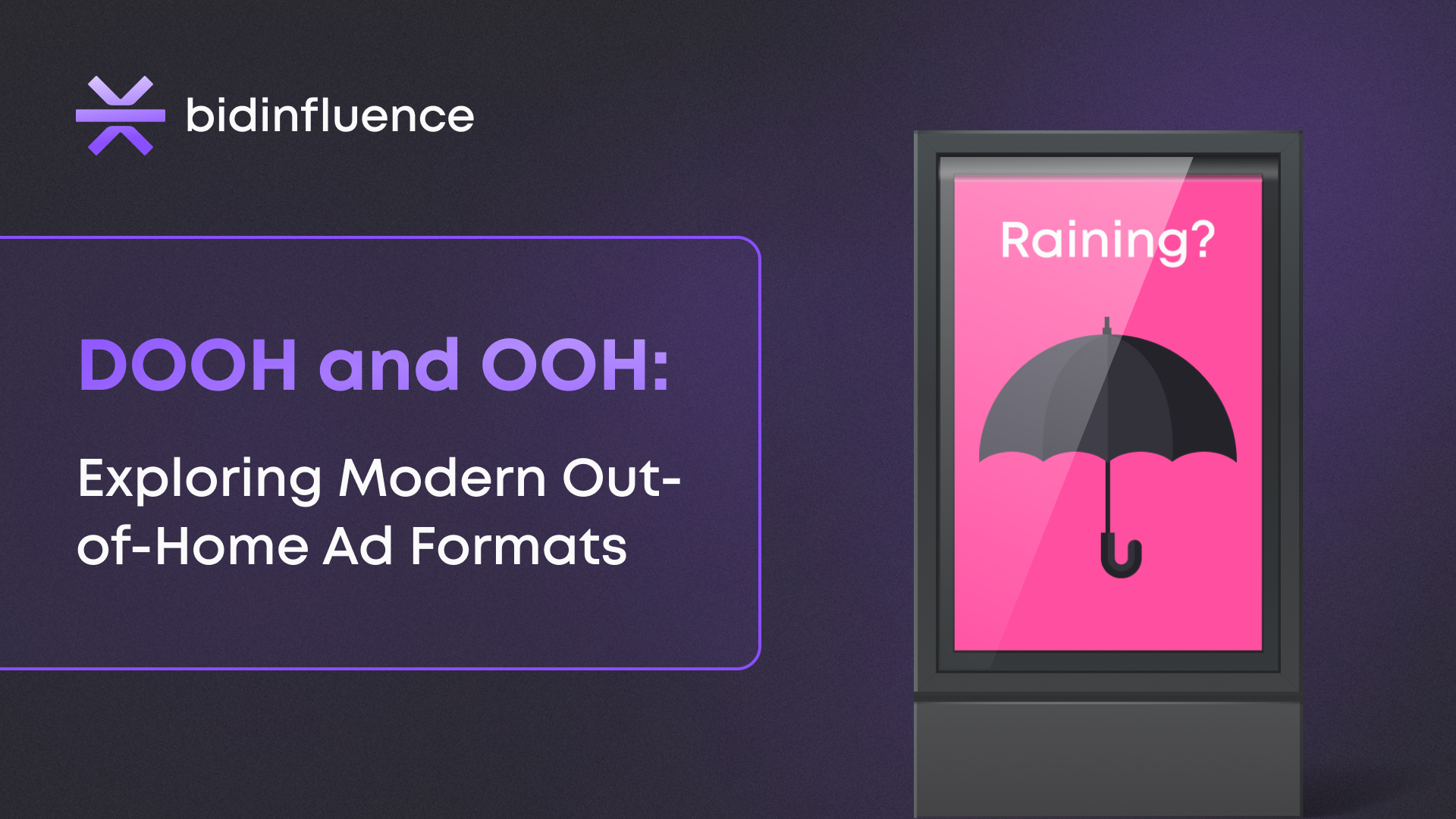Before we start talking about the future of programmatic advertising, let’s first look at its capabilities. Programmatic advertising entails the automated purchase and sale of digital ad space in real-time through the utilization of technology and data-driven processes. It organizes the process of ad buying by targeting specific audiences and optimizing campaigns based on performance metrics.
Publishers leverage Supply-Side Platforms to efficiently oversee and enhance their advertising inventory. They integrate supply-side platforms into their websites or apps to make their ad space available to potential buyers via ad exchanges. SSPs empower publishers by granting them control over which advertisers can bid on their inventory and the prices at which they can do so. They also provide tools for managing ad placements, optimizing revenue, and analyzing performance.
Programmatic Advertising in Facts and Figures
- In 2023, the value of programmatically sold advertising soared to an impressive $546 billion, with projections indicating a climb to $779 billion by 2028.
- According to the most recent Statista projections, the marketing automation software market is expected to thrive and reach a level close to $11 billion by 2031.
- The global programmatic advertising market surged to $8.87 billion in 2023, with expectations pointing towards sustained growth.
- Forecasts of Programmatic Advertising Global Market Report 2023 suggest that in 2027, the market will expand further, reaching $19.12 billion, boasting a Compound Annual Growth Rate (CAGR) of 21.2%.
- Programmatic advertising offers advantages across various media types, including audio ads, digital out-of-home (DOOH) ads, digital display ads, social ads, and video ads.
New Programmatic Ad Technologies
AI significantly changes advertising by quickly automating media buying and targeting ads to users. It employs data to personalize ads, making the process seamless for marketing teams. Artificial intelligence already impacts various ad formats, like CTV commercials and web search ads. AI helps create, test, and improve ad campaigns rapidly. It tests elements like colors, text, and images to find the best-performing combination. It also tests distribution variables such as device type and ad placement. This allows for precise targeting and makes ad adaptation to specific contexts easy and scalable.
Machine learning helps AI get better at decisions by finding patterns in data. They help marketers do better with programmatic advertising and adjust quickly to what customers do. When AI and machine learning work together, they make customers come back and show them ads they like. This means more people engage with ads to buy stuff, and it costs less. Marketers learn more about customers by trying different things in ads and can grow bigger.
Machine learning changes what AI does based on what people like and do. It affects important parts of ads, like making them personal, spending money right, looking at data, and understanding what ads mean. It helps ads fit better with websites and keeps the brand safe.
Cross-functionality of Programmatic Advertising
Using a cross-channel platform makes marketers’ work easier by letting them run ads on many different channels from one place. With programmatic advertising, they can place video and audio ads in streaming content. They can also display ads on social media and other websites related to your industry and show ads on connected TVs and devices like tablets and phones.
For example, cross-channel marketing might mean sending a link to an advertiser’s website to someone’s phone, even if they visited this site on a computer before. Or it could involve sending emails to people interested in similar products online. Marketers might also offer targeted coupons or discounts on one device based on searches done on another.
Cross-channel platforms rely on cross-device technology, which works on all the different devices people use. Instead of just tracking cookies on websites, it uses Universal IDs to follow people across multiple devices. It helps create a complete profile of potential customers across all their devices. And most importantly, it connects all the different channels that influence someone’s decision to buy, not just the last one they clicked on.
Programmatic Audio and Video Advertising
The audio advertising industry is experiencing significant growth due to the rise of podcasts, smart speakers, and streaming services. Digital audio is becoming increasingly popular among consumers, presenting an attractive opportunity for advertisers. Programmatic audio, particularly in Europe, has grown notably and now accounts for a notable portion of digital audio ad spend. Despite technology adoption limitations, programmatic audio platforms are well-equipped to facilitate automated trading between buyers and sellers.
Audio advertising presents unique opportunities and challenges compared to display or video ads. Podcast ads, for instance, seamlessly blend with content and are well-received by listeners. However, data privacy regulations such as GDPR pose challenges for data usage in the digital audio landscape. Despite these challenges, the future of digital audio advertising looks promising. Many advertisers are increasing their investments in digital audio to capitalize on its engaging and interactive nature. Interactive voice capabilities hold promise for the future of audio advertising, offering new ways for advertisers to engage with consumers.
Video advertising is a potent tool for brand storytelling and captivating audiences. Its versatility and impact make it unmatched in the advertising realm. According to forecasts, US programmatic video ad spending is projected to soar by $22.51 billion between 2023 and 2025, marking a 30.2% increase. Compelling reasons behind the surge:
- 2022 marked the first instance where programmatic video outruned non-video ad spending in the US.
- Programmatic video ad spending hit $64.17 billion, while non-video programmatic ad spending experienced a slight decline to $58.14 billion.
- Connected TV is the primary catalyst driving the shift towards video programmatic ad spend.
- A significant portion of US programmatic video ad spending, accounting for 63.5% of the total category spending, is projected to go towards mobile.
- Fueled by platforms like TikTok, social video is also a substantial driver of programmatic ad spend.
- Expected to grow by 12.5%, social video constitutes 41.5% of all video ad spend.
As we can see, the landscape of programmatic video advertising is dynamic, with substantial growth fueled by trends in connected TV and social platforms.
Trends & Forecasts
AI Dominance
Artificial intelligence is set to revolutionize programmatic advertising by significantly enhancing targeting, optimization, and personalization capabilities. AI-powered algorithms will empower advertisers to delve deeper into consumer behavior patterns, predict trends, and dynamically adjust ad campaigns in real-time across multiple channels for maximum impact and ROI.
Cookie-Free Identification Solutions
Almost two years passed since Google announced the elimination of third-party cookies in its Chrome browser. However, data is crucial for understanding who customers are. The transition to a cookieless future will happen gradually over three months in 2024. To prepare for this change, it’s important for marketers to start planning ahead. They need to develop strategies that don’t rely too much on third-party cookie data. There are a lot of such solutions, from contextual targeting to Universal IDs. This trend will be on the rise, and methods will be widened and upgraded.
Surging Popularity
Programmatic advertising is on a trajectory of continuous growth and widespread adoption. Its popularity stems from its unmatched efficiency, scalability, and ability to deliver hyper-targeted campaigns that resonate with audiences across diverse demographics and interests. As advertisers increasingly recognize programmatic value, its prominence in digital marketing strategies will only continue to rise.
Channel Expansion
The landscape of programmatic advertising is expanding rapidly, driven by the proliferation of new channels and platforms. Beyond traditional avenues like connected TV, social media, and mobile advertising, emerging mediums such as augmented reality, virtual reality, and voice-enabled devices are integral to programmatic campaigns. This channel diversification allows advertisers to engage with consumers innovatively and capture their attention across multiple touchpoints throughout their digital journey.
Summary
Programmatic advertising, driven by automation and data, is revolutionizing digital marketing. Publishers utilize SSPs to manage ad inventory, leading to impressive market growth, which is projected to reach $779 billion by 2028.
Advancements like AI and machine learning optimize ad campaigns, while cross-channel platforms enable seamless ad placement across various mediums. Audio and video advertising see significant growth, with programmatic audio and video ad spending projected to rise.
AI dominance promises enhanced targeting and personalization while transitioning to cookie-free identification solutions poses new challenges. Despite this, programmatic advertising remains popular due to its efficiency and scalability.
The landscape is expanding, embracing new channels like augmented reality, virtual reality, and voice-enabled devices, facilitating innovative consumer engagement. As programmatic advertising continues to evolve, its impact on digital marketing strategies is undeniable.



